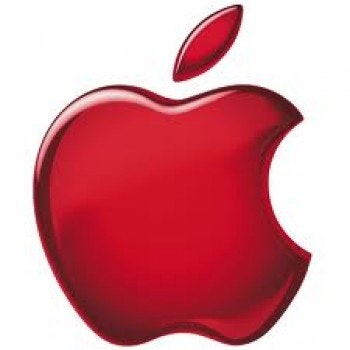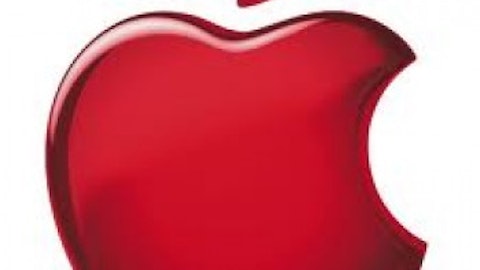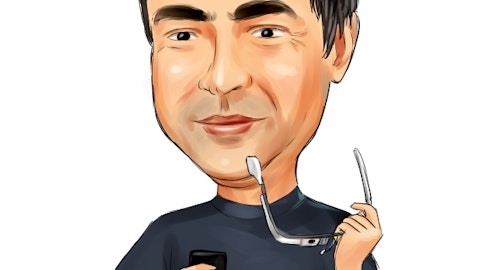Apple Inc. (NASDAQ:AAPL)‘s rapid growth in recent years has been the product of an extraordinary value offering: Since their introduction, both the iPhone and iPad have been the best products at the best price points. In the past, consumers looking to a buy a smartphone or tablet could go with a competitor’s product, but they wouldn’t be saving any money — and they’d be getting an inferior device.
But, times have changed.
In just the last year, the market has rapidly shifted. Now, Apple Inc. (NASDAQ:AAPL)’s products appear to be overpriced compared to their rivals, and they aren’t necessarily better.

The iPhone is getting undercut both at home and abroad
Ask most Americans what an iPhone costs, and they would probably tell you about $200. That’s the price the majority of them pay because major mobile carriers (AT&T, Verizon, Sprint, and T-Mobile) cover the rest. But, in emerging markets it’s quite different; carrier subsidies are practically unheard of. There, consumers often have to pay the full price of the device up front, and given that consumers in those markets, on average, earn far less money, that can be quite a hurdle.
Apple Inc. (NASDAQ:AAPL)’s new iPhone 5C — the company’s cheaper model — will retail for about $733 in China, roughly equivalent to the average monthly salary in the world’s most populous country. Is it any wonder, then, that (in China) the iPhone’s market share is less than 5%?
Google Inc (NASDAQ:GOOG)‘s Android powers the majority of smartphones in China, where local vendors like Lenovo, Xiaomi, and Huawei offer high-end phones at bargain prices. Xiaomi’s Red Rice is, from a technological perspective, about as powerful as the iPhone 5C, but retails for just $130.
Even in the U.S., Apple Inc. (NASDAQ:AAPL) is being undercut. Although flagship smartphones from major competitors like Samsung, HTC, and Motorola also cost roughly $200 on contract, Google Inc (NASDAQ:GOOG)’s Nexus 4 retails for just $199 unlocked. That means budget-conscious consumers can either buy a Nexus 4 (a phone that’s about as powerful as the iPhone 5C) off-contract and go with a cheaper, prepaid carrier, or stick with a major carrier, but stay off contract.
The iPad is now one of the most expensive tablets on the market
The Nexus 4, despite offering insane value, remains a fairly low-volume phone. Google Inc (NASDAQ:GOOG) doesn’t really advertise it, and most Americans appear to be fine with the wireless contract model.
But, the tablet market is far different. Subsidized tablets do exist, but most are still bought off-contract. Thus, consumers (even in rich countries like the U.S.) are far more susceptible to price differences in tablets than they are in phones.
In just the last year, a huge gap has opened between the iPad and its rivals. The full-size iPad retails for $500. In past years, this was a fair price, as other 10-inch tablets were just as costly, if not more so — Motorola’s Xoom, the first major Android tablet, went on sale in 2011 for $600.
But, as with phones, times have changed. The iPad’s competitors appear to have settled on the $300-400 price range as the fair value for a 10-inch tablet. Microsoft Corporation (NASDAQ:MSFT)‘s Surface RT retails for $349, Google Inc (NASDAQ:GOOG)’s Nexus 10 and Samsung’s Galaxy Tab 3 go for $399, and Amazon‘s Kindle Fire HD is just $269 (though to be fair, its screen is only 8.9-inches).
When it comes to smaller tablets, it’s even worse. The iPad Mini is an inch larger than most of its Android rivals, but that extra inch costs a lot. At $329, the iPad Mini is $100 more expensive than Google Inc (NASDAQ:GOOG)’s Nexus 7. It’s also significantly less powerful, with a slower processor, lower resolution screen, and worse camera.
How much does an ecosystem matter?
Despite being overpriced relative to their competition, people continue to buy Apple Inc. (NASDAQ:AAPL)’s products. Apple has a monopoly on one thing its competitors lack: iOS. The mobile operating system continues to be highly regarded, both for its ease of use and its app ecosystem.
Compare that to Microsoft Corporation (NASDAQ:MSFT): Despite a heavy ad campaign, including a $1 billion push for Windows 8, sales of its Surface RT tablet have been poor and the company was forced to take a $900 million writedown last quarter.
Based on hardware specs alone, the Surface RT isn’t bad. It’s about as powerful as the full-size iPad, but also has some key features the iPad lacks, like a USB port and the ability to expand its storage with an SD card. However, because it runs Windows RT, it’s fundamentally flawed.
Unlike iTunes, the Windows app store is terrible, missing numerous key apps like LinkedIn, Amazon Video, and HBO Go. Although these services can be accessed through a browser, consumers prefer dedicated apps. Research firm Flurry found that 80% of the time people are using a mobile device, they’re using an app.
What is iOS worth?
In the past, buying an Apple Inc. (NASDAQ:AAPL) device was an easy choice. They made the best products and sold them at the best prices. Nowadays, it isn’t so clear — Apple might still make the best devices, but they are far from fairly priced. In the end, it really boils down to iOS: its value to consumers and the premium they’re willing to pay for it. If iOS is worth that extra $100 — and it may be — Apple has nothing to fear.
But, investors should recognize that, over just the last year, things have changed for Apple. It has gone from a value leader to a premium brand, and the long-term ramifications of that shift aren’t readily apparent.
The article Apple’s Products Are Now Overpriced originally appeared on Fool.com and is written by Sam Mattera.
Sam Mattera has no position in any stocks mentioned. The Motley Fool recommends Apple and Google. The Motley Fool owns shares of Apple, Google, and Microsoft.
Copyright © 1995 – 2013 The Motley Fool, LLC. All rights reserved. The Motley Fool has a disclosure policy.




